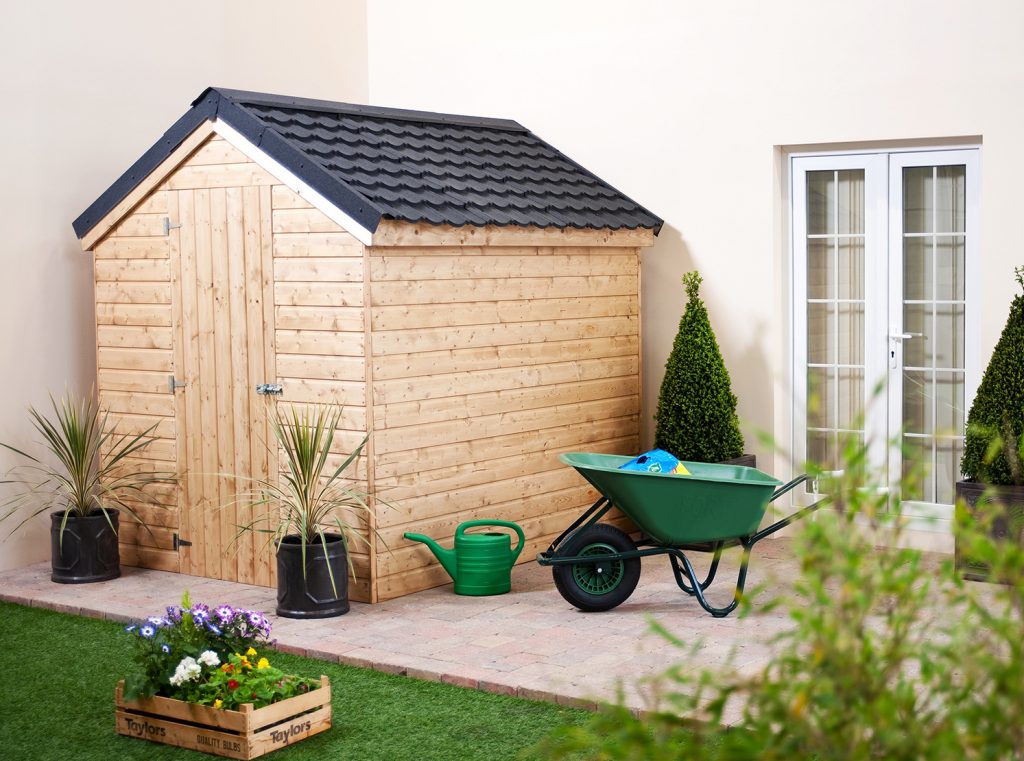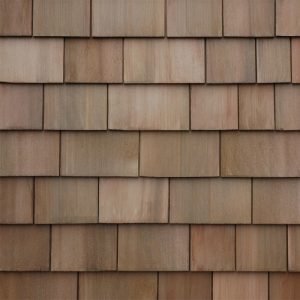Waterproofing shed walls isn’t something that you should have to do. When buying a shed this shed should come with guarantees and warranties reassuring you that this is going to be waterproof for at least a few years. However, there are other factors that come into play that might mean your shed is inviting water in driving rain or wind. Below is a good example of a shed in a good location with a base beneath it to prevent rising damp from wet ground.
Reasons you may need to waterproof your shed walls
If sheds are in exposed positions, they may be more likely to let wind-driven rain penetrate the walls. Wind and rain will batter the side of a standard garden shed in an exposed position, so this could be one reason why your shed isn’t as waterproof as you’d like.
Add to this poor-quality timber (which will have inconsistent grain and knots that could let water in), or tongue and groove boards without enough overlap, and you’ve got a recipe for leaks! If your shed is often subjected to rain, then the timber will shrink and swell. This could impact the overlap of tongue and groove boards.
How do I waterproof my shed walls?
To waterproof shed walls, consider where the rain is coming in and work from there.
Water entering the shed from one side
If water is coming in from just one exposed side, you could buy some cheap water-resistant shiplap or cladding and fix this to the exposed side of the shed. It may not always look the best but it’ll waterproof your shed walls. Options like wood shingles will improve the appearance of this quick fix!
Damp and musty shed after rain
In this case, a timber treatment which not only refreshes the colour of the shed but provides a water-repellent coating is your best bet. It won’t stop water from entering the shed through splits and cracks in the timber, but it will stop the inside of your shed from being damp and musty after a rainy spell.
Water entering the shed from all sides
If the general construction of your shed has suffered over the years, or if it wasn’t much good from the outset, then this is probably an issue with the quality of timber and construction. If water is entering your shed from all over, from cracks and splits, your shed is worth replacing. The cost of persistent maintenance and fixes will soon total more than a new shed.
If you’re looking for a more robust and secure, permanent shed, try stretching your budget a little and opting for a metal shed. These are tougher and will stand up to the test of time without treatment.
What can I do so that I don’t need to waterproof my shed walls?
Prevent leaks from the outset by taking steps that make water ingress more unlikely. Simple measures like considering the lay of the land will help to stop any issues. If your garden is slightly sloped, or it’s on a hill, don’t place the shed at the bottom of these. Water will run down the garden and permanently wet and boggy ground during winter months will make damp more likely.
Any soft ground under your shed will make the shed sink into the wet or damp earth. Prevent this by installing the shed in a good location, as just mentioned, or dig a small patch where the shed is being installed and line this with damp proof membrane. When it’s lined with DPM lay concrete slabs on which your shed can sit.
Use a timber treatment at regular intervals to keep your shed looking, and acting, like new. Some wood treatments give not only colour but they make the shed surface water-repellent too.









